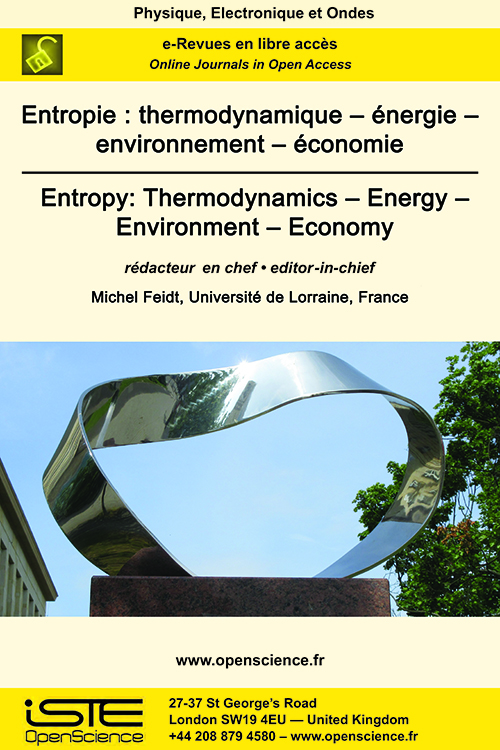

Physics > Home > Entropy: Thermodynamics – Energy – Environment – Economy > Issue
La Société Française de Thermique est une société savante qui a pour vocation le développement et le rayonnement des Sciences Thermiques en elles-mêmes et dans leurs applications ...
This study deals with numerical simulation of anisothermal flows in gas pressurized solar receiver. A turbulent air flow, in a bi-periodical channel, at low Mach number and high Reynolds number is considered. A posteriori tests are performed in order to compare results of several turbulence models of large eddy simulations with a direct numerical simulation. Functional, structural and mixed models are evaluated. Dynamic and thermal integral values caracterizing the flow, as well as mean and fluctuating values of velocity and temperature are analysed.Velocity and temperature correlations are studied.
Ablation of an ice bloc by a hot water jet is studied to understand the physical phenomena involved in the process, the final goal is to design SFR’s core-catcher. The system studied is comprised of a water jet and a transparent ice block. Ablation process is followed by use of high-speed camera and back lighting. First results are presented. A new ablation regime is reported. The evolution of ablation speed with time and jet speed is analyzed.
A device for for fibers axial thermal conductivity measurement has been developed and modeled by finite elements. The numerical model made it possible to minimize the radiative losses. Thermal conductivity measurements have been performed on three standard samples representative of the measurement range and validate this device from 0.1 W.m-1.K-1 to 100 W.m-1.K-1 as well as on samples made up of viscose fibers and T300 carbon fibers, which validated the device for the characterization of fiber strands from precursor fibers to carbon fibers.
This paper presents a novel in situ measurement method of the total heat transfer coefficient on a building wall. The device developed is based on harmonic thermal load of the wall surface. In situ tests of the method were performed in a steady environment as well as in off-equilibrium conditions (generated using electrical heaters). The heat transfer coefficient was estimated to 7.5 and 9 W.m−2.K−1 respectively. A parametric analysis allows determining the optimum operating conditions. The results obtained were in good agreement with standard values found in the literature. Measurement uncertainties were evaluated and a simple analytical model of the device was also developed.
An optical measurement technique has been developped to characterize the heat transfer in a falling liquid film with surface instabilities, which is flowing down an inclined plane. The waves traveling at the free surface are generated harmonically. The novel technique based on Laser Induced Fluorescence enables to provide simultaneously a measurement of the thickness and the temperature of the liquid film. The experimental results reveal the temporal evolution of the average temperature in the thickness of the film, when the film is travelled by waves of controlled frequency.

2025
Volume 25- 6
Issue 12024
Volume 24- 5
Special issue LILA 22023
Volume 23- 4
Issue 12022
Volume 22- 3
Issue 12021
Volume 21- 2
Special issue2020
Volume 20- 1
Issue 1